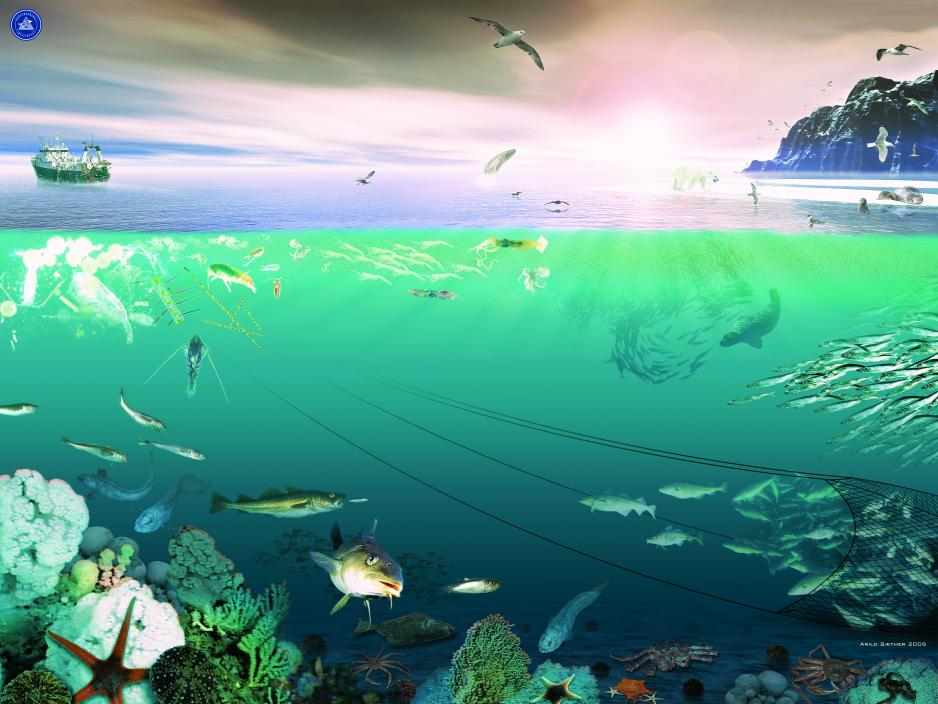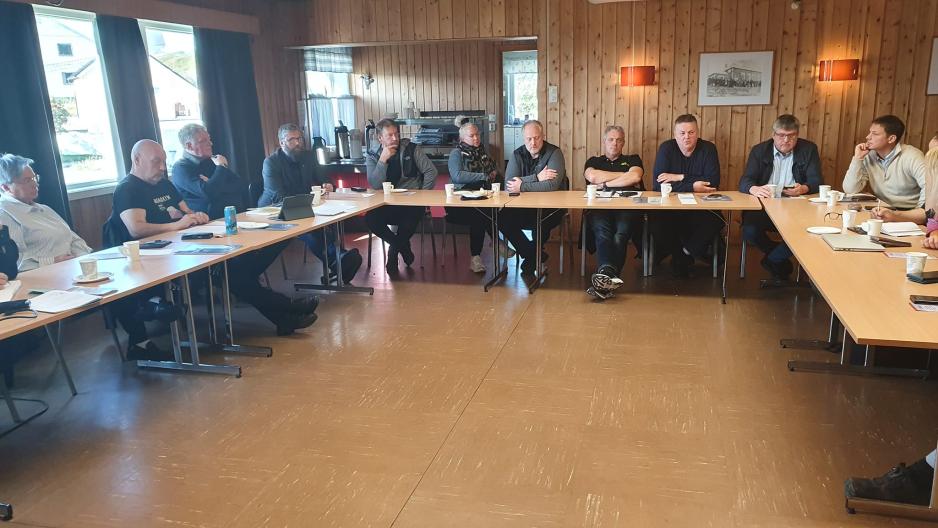The 2025 cod quota could be the lowest in 30 years Marine Researcher on the Decline in the Cod Population: “Not One Sole Cause”

Researcher Bjarte Bogstad of the Norwegian Institute of Marine Research has many years of experience in stock assessment and advising on fish stocks in the Barents Sea, particularly cod, haddock, and capelin. Bogstad has participated in the Joint Norwegian-Russian fisheries commission every year since 2010, and he is also part of the Norwegian-Russian working group for Arctic fisheries. He has also led several ICES (International Council for the Exploration of the Sea) working groups. (Photo: Christine Fagerbakke / the Norwegian Institute for Marine Research)
The quotas for Northeast Arctic cod will likely not go lower than in 2025, but it will take a few years before there is a significant increase, says marine researcher Bjarte Bogstad in the Norwegian Institute of Marine Research. "We must have low quotas for a few years in order to have a chance at increasing the cod stock again."
The decrease in the cod quota is creating concern among the Norwegian fishing fleet and the fishing industry on land. Recently, several businesses have announced downsizing and layoffs due to a lack of fish. The changes are particularly noticeable in the fishery-dependent local communities along the coast in Northern Norway.
For next year, marine researchers have recommended a further quota decrease for the Northeast Arctic cod, or cod in the Barents Sea. If the recommendation is followed, the cod quota will be the lowest it has been for 30 years.
"We must have low quotas for a few years in order to have a chance at increasing the cod stock again," says researcher Bjarte Bogstad at the Norwegian Institute of Marine Research.
Bogstad is the stock manager for Northeast Arctic cod at the Institute of Marine Research and is also part of the joint Norwegian-Russian working group for Arctic fisheries, which presented its quota recommendations for the Northeast Arctic cod and haddock in June. In an interview with High North News, Bogstad explains the reasons behind the reduction in quotas.
Puts a brake on fisheries
"The cod stock and the quota reached an all-time high in 2013 with a total quota of about 1 million tonnes. One did not expect this situation to last. Afterward, both the stock and the quotas have decreased significantly," says Bogstad.
The researchers recommend a total cod quota of 311,587 tonnes for 2025, a 31 percent decrease from this year's quota.
The Norwegian-Russian fisheries cooperation
- The Northeast Arctic cod stock is jointly managed by Norway and Russia
- The Joint Norwegian-Russian Fisheries Commission meets at the end of October and will set the total quotas for a.o. Northeast Arctic cod and the Northeast Arctic haddock.
Bogstad highlights that the cod quota can maximally change by 20 percent from one year to another. This rule has been applied several years in a row, and the cod quotas have thus not decreased by more than 20 percent each year since 2022. Therefore, there has been a higher pressure on the fish stocks than it should have been in the past years, even though the quota recommendations have been followed, he says.
However, the limitation does not apply if the size of the spawning stock drops below precautionary levels.
"That is where we are at now, and therefore, we recommend that the quota be decreased by 31 percent. If a crisis is imminent, one must break a little harder," says the marine researcher and elaborates:
"Not everything is "plunging" though, but we must have low quotas for a few years in order to have a chance at increasing the cod stock again."

The Barents Sea ecosystem. (Illustration: Arild Sæther / the Norwegian Institute of Marine Research)
Not one sole cause
The cause of the quota reduction and the diminishing stock is poor recruitment over several years. Fewer fry grow up and become part of the adult spawning population.
"We do not believe that the cod quotas will go even lower, but it will take a few years before a significant increase. This is a.o. due to the weak year classes of cod from 2019 to 2020. It often takes four to five years before the cod enters the fisheries and closer to seven years before the first spawning. Therefore, there is little supply to the fishable part of these stocks now. The year classes that come after 2020 are a little better," says Bogstad.

Map over the distribution of Northeast Arctic cod. (Illustration: the Norwegian Institute of Marine Research)
"In the same years, there was also poor recruitment of both haddock and herring, but the recruitment to these stocks has managed to increase more."
Why do fewer fry grow up to become spawning cod?
"That is a matter we are trying to get to the bottom of, and we don't believe there is just one sole cause. This has always varied quite a lot," he says.
Bogstad highlights one factor that may have had an impact: changes in the inflow of water from the Norwegian Sea in May and June, which usually bring a lot of redfish and other zooplankton to the Barents Sea.
"One of the factors that may have led to poorer survival of cod fry is a significant registered reduction in this inflow, and the amount of zooplankton in the southern parts of the Barents Sea has gone down. This is where most of the cod fry grow up. If the cod larvae are to survive and grow bigger, it must have enough food, such as zooplankton, available," he says.
Several other reasons can also be involved. According to marine researchers, this could be due to factors such as more predators or cod spawning further north than before.
Effects of climate
Bogstad clarifies that it is unclear how climate affects the number of fish that grow up and become adults. He says it is known that fewer fry grow up in cold years, but we are not currently in a cold period.
"Whether the cod spawns far north or south also plays into this. In recent years, we have seen that a larger part of the spawning occurs north of Lofoten. Whether it is positive or negative for the survival of what is spawned is not self-evident. But it is clear that it can play a role," he explains.
"The temperature conditions in the Barents Sea are still suitable for cod, although it has not been as warm in recent years as in the early 2010s," the ocean researcher continues.
Expect increase of haddock after 2025
You also mentioned haddock. What is the situation for this fish species?
"We have recommended a quota reduction in 2025 for the Northeast Arctic haddock as well, but after that, it looks like we will see an increase again," Bogstad replies.
The researchers recommend that catches of northeast Arctic haddock do not exceed 106,912 tonnes in 2025, which is 24 percent lower than the quota for 2024.
"For haddock, it actually looks a little better if we look a few years ahead. Several good year classes are underway, but these mustn't be fished out too early. Haddock must ideally be allowed to grow past the minimum target," he adds.

From a dialogue meeting in Gamvik municipality in Finnmark, Northern Norway about the crisis facing the fishing industry. Two of the municipality's fishing landing sites have laid off and downsized as a result of the halt in haddock fishing earlier in September 2024. (Photo: Gamvik municipality).
Possible overfishing of small fish
In the fishing industry, recent discussions have focused on the supposed Russian overfishing of small cod in the Barents Sea, as mentioned by Fiskeribladet, among others.
What is your perspective? Is this a growing challenge?
"We are trying to map as well as we can, but it may look like it has become a bigger challenge from the second half of last year, at least in the Russian zone. In the Norwegian zone, we have so far primarily seen a challenge with too much haddock below the minimum target," answers Bogstad.
The marine researcher says there is still good cooperation with Russian colleagues. The Norwegian-Russian fisheries cooperation is exempt from the sanctions.
"Under the circumstances, this collaboration still works well. This is mainly because both sides have had stable personnel for many years. In the middle of all this, that is positive news," concludes Bogstad.
Northeast Arctic cod and Norwegian-Russian fisheries cooperation and marine research
- The Northeast Arctic cod stock is jointly managed by Norway and Russia.
- The Norwegian-Russian Fisheries Commission determines the quotas for cod, haddock, capelin, Atlantic redfish, and blue halibut every year.
- The quota recommendations for the Barents Sea are normally anchored in the International Council for the Exploration of the Sea (ICES). However, due to the war in Ukraine, ICES suspended Russia in March 2022.
- Norway has exempted Norwegian-Russian fisheries cooperation from the sanctions against Russia.
- The quota advice will thus become bilateral and delivered by the research group under the Norwegian-Russian Fisheries Commission.
- The research group comprises researchers from the Norwegian Institute of Marine Research and the Russian Research Institute of Fisheries and Oceanography (VNIRO).
- The marine scientists have worked closely together since 1958
Source: Havforskninginstituttet.no / Norwegian Institute of Marine Research



